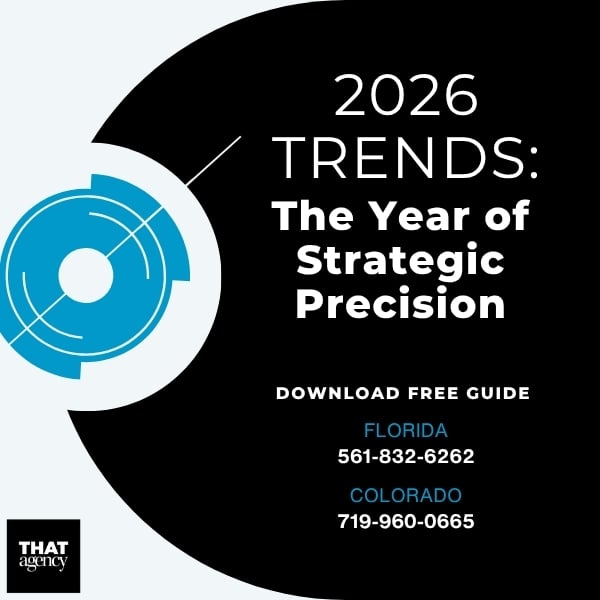Ever feel like you're drowning in content work? You're not alone. The marketing world is moving fast, and AI content creation is changing everything about how we write and share stuff online. Whether you're running a small shop or handling marketing for a big company, you've probably seen AI pop up everywhere lately.
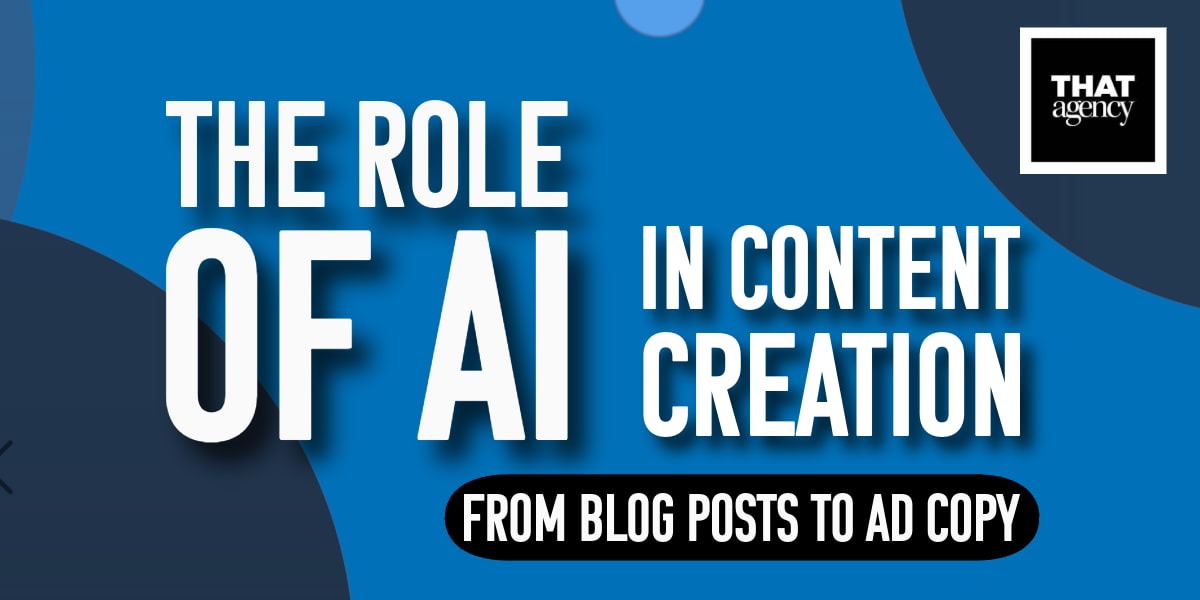
Here's the deal: AI tools are helping businesses pump out more content in way less time. We're talking blog posts, social media captions, email campaigns, and even those tricky ad headlines that need to grab attention fast. But what does all this mean for you? Let's dig into how AI is shaking up content creation and what you should actually do about it.
Okay, so what exactly is AI content creation? Think of it like having a super-smart writing buddy who never gets tired. These tools read through tons of stuff on the internet and learn how to write like humans. Then they help you create text, images, and even videos.
For a deeper look into how these models shape search and visibility, read What Is Generative Engine Optimization.
It's not magic, though. It's basically really clever computer programs that understand language patterns. And yeah, they're pretty good at their job.
Here's why people are getting excited about AI for content:
Want some proof this is taking off? The AI-powered content creation market hit $2.15 billion in 2024. By 2033, experts think it'll hit $10.59 billion. That's huge growth, and it shows businesses everywhere are trying this out.
But wait, does this mean AI is replacing human writers? Nope. Not even close. What's happening is that AI is changing how we work. Get this: 90% of content marketers say they'll use AI in 2025. That's way up from 64.7% just two years ago. Why? Because it's working. Companies using AI are creating 47% more content each month and growing 5% faster than competitors who aren't using it.
If you want to explore how this evolution affects digital marketers, check out The Future of Digital Marketing.
Let's be real, writing blog posts takes forever. You've got to research stuff, make an outline, write the actual thing, edit it, and then make sure it'll show up in Google. It's exhausting. AI is making all of this way easier.
To see how to merge AI efficiency with ranking power, visit SEO Trends in 2026 and SEO Content Strategy.
You know that awful feeling when you're staring at a blank screen? When you can't figure out what to write about? AI fixes that problem fast.
These tools can tell you what topics your audience actually wants to read. Just ask them to look at trending stuff, common questions, or hot topics in your industry. This is similar to how tools like AI Integration in Digital Marketing recommend smarter campaign planning.
Let's say you run a home repair business. You can ask an AI tool: "Give me blog ideas about getting a house ready for winter." Boom. In seconds, you've got a whole list of topics people are searching for right now.
Once you pick a topic, AI can build you a full outline. This saves hours of planning time. The AI looks at what's already ranking high on Google for your topic and suggests what sections you should include. You can learn more about this approach in Semantic Search.
Your outline might have:
Here's where it gets cool. AI can write you a complete first draft from your outline. Now, don't get me wrong, you can't just copy and paste it. You'll need to add your own thoughts, check the facts, and make sure it sounds like you. But starting with something solid instead of nothing? That's a game-changer.
Here's an interesting stat: Only 4% of marketers just publish what AI writes without touching it. The other 96% edit everything first. And that's exactly what you should do too.
For insight into balancing automation and human touch, see Mastering Customer-Centric Inbound Marketing.
When we talk about AI copywriting tools, there's a lot to choose from. These are special programs built to help you write marketing copy that actually gets results. If you’re diving into paid media, you’ll want to read PPC Strategies: How to Maximize ROI to see how automation and ad testing align.
A few AI copywriting tools have become super popular. ChatGPT is the big winner, 77.9% of content marketers say it's their go-to tool. Other favorites include Jasper, Copy.ai, Writesonic, and Copymatic.
Each one has different strengths:
AI copywriting tools are really good at certain things. They crush it with short content like social media posts, email subject lines, and ad copy. Recent surveys show 55% of marketers use AI for making content. The most popular uses? Email marketing (51%), social media posts (49%), and blog posts (46%).
These tools can also handle:
Budget is important, especially if you're running a small business. Most AI copywriting tools have different price levels. Some let you start for free with basic features. Premium plans usually run $20 to $100 per month. Compare that to paying a freelancer $200+ for every article. The savings add up really fast.
Writing ad copy is tough. You need to grab someone's attention and make them want to click, all in just a few words. AI tools are getting really good at helping with this. To see how data-backed creativity works in practice, check out Marketing Analytics.
One of the coolest things about AI for ads? Speed. You can create dozens of different ad versions in minutes. This means you can test different approaches quickly and see what your audience responds to.
Say you're running Facebook ads. You can ask your AI tool to write 10 different headlines and 5 different versions of the ad text. That gives you 50 combinations to test. And you didn't spend hours writing them all.
AI tools can look at successful ads in your industry and suggest copy that follows what's already working. They check what keywords perform well, what emotions get people to click, and what phrases work best for calls-to-action.
But here's the thing: AI doesn't know your customers like you do. You'll still need to review what it suggests and change things based on your brand's personality and what you know bugs your customers or gets them excited.
Let's clear something up: AI is a tool. It's not replacing human creativity and smarts.
AI struggles with some really important stuff:
Here's something interesting: A study from MIT found that people prefer content when they know humans helped make it. Readers can often tell when something is 100% AI, it feels generic and boring. It's missing that personal touch that makes content stick in your mind.
If you want to understand where automation ends and human storytelling begins, see Content Marketing Consultant for insight into balancing creativity with strategy.
The best strategy? Combine AI's speed with human skills. Let AI handle the boring, time-eating stuff:
Then you come in and add the good stuff:
This teamwork approach is what's working for successful marketers. About 87% of marketing pros now use AI for content creation. But they're using it as a partner, not doing all the work.
This combination mirrors the balance described in Inbound vs. Outbound Marketing — automation fuels reach, while people build relationships.
Okay, so does this stuff actually get results? Let's look at the numbers.
Neil Patel (he's a big SEO expert) did some testing. He found that content with human oversight gets more visitors from Google than stuff that's 100% AI. The key words there? "Human oversight", meaning someone reviews, edits, and makes AI drafts better.
Companies that mix AI into how they make content are seeing:
The money side of this is pretty big. When you use AI to help:
Let's say you're a marketing manager who used to pay for 10 blog posts a month at $200 each. That's $2,000. Now you use AI for drafts and edit them yourself. You could save $1,500 or more every month.
Ready to try AI content creation for your business? Here's how to start without messing things up.
Don't try every AI tool at once. You'll just confuse yourself. Start with one or two that fit what you need. If you're mainly writing blog posts, try ChatGPT or Jasper. If social media is your thing, check out Copy.ai or Copymatic.
Test different tools by giving them the same assignment. See which one gives you results closest to what you're looking for.
The quality of what AI gives you depends on how you ask for it. Vague requests get you vague results. Specific, detailed prompts get way better stuff.
Don't say this: "Write a blog post about email marketing"
Say this instead: "Write a 1,000-word blog post for small business owners. Explain how to get more people to open their emails. Include three specific strategies with examples. Make it friendly and conversational."
See the difference?
Never, ever publish AI content without looking it over first. Check for:
Set up a system where AI makes the first draft. Then a real person reviews it, edits it, and says it's good to go before it goes live.
Check how your AI-helped content does compared to your old stuff. Look at things like:
This info helps you get better at using AI and figure out what your audience actually likes.
This technology keeps getting better. Here's what's coming down the road.
AI tools are getting better at creating personalized content for different people. Instead of one blog post for everybody, you'll be able to make different versions for different groups automatically.
Here's an example: An AI might write one version of a product description for people watching their budget. Then it makes another version for luxury shoppers, all from the same basic info about the product.
Text is just the start. AI video tools like Pictory and Synthesia are making it easy to create professional videos without expensive cameras or equipment. Voice-to-text is also getting better. You can just talk about your ideas, and AI turns them into polished content.
As tools that detect AI get better, so do the systems that help keep quality high. New AI platforms are being built with better fact-checking, tone matching, and brand alignment built right in.
The industry is paying more attention to using AI the right way. This means being honest about when content is AI-helped, respecting copyright laws, and keeping people's data private. Expect more rules and best practices to show up.
Different types of businesses are finding their own ways to use AI content creation.
Stores selling stuff online use AI to write product descriptions for tons of items. A store with 10,000 products can create unique descriptions that are good for SEO in days instead of months.
Doctor's offices and hospitals use AI to create patient education materials, blog posts about health topics, and social media content. But they always have a medical pro review it for accuracy.
Real estate agents use AI to write property descriptions, create guides about neighborhoods, and make blog content about buying and selling homes.
Law firms, accounting offices, and consulting companies use AI to create thought leadership content, case studies, and educational stuff for their clients.
Learning from other people's mistakes can save you a ton of time and headaches.
Publishing stuff straight from AI without editing is asking for trouble. AI makes mistakes with facts, misses important context, and creates generic content that doesn't stand out from the crowd.
AI doesn't automatically know how your brand talks. If you're known for being funny and a little edgy, but your AI content sounds boring and corporate? Your audience will notice right away.
AI tools sometimes "hallucinate", which is a fancy way of saying they make stuff up. They'll create facts, statistics, or sources that don't actually exist. Always double-check information before you hit publish.
AI can help with SEO, but it doesn't happen by itself. You still need to make sure your important keywords show up naturally, your headings are good, and your meta descriptions make people want to click.
If your team doesn't know how to use AI tools the right way, you won't get good results. Spend time learning how to write good prompts and how to edit what AI gives you.
AI content creation uses really smart computer programs to make written stuff, images, or videos. The AI looks at millions of examples of content that already exists to learn patterns. Then it creates new content based on what you ask for. Think of it like having a writing assistant who's read the entire internet and can quickly pull together info on any topic you need.
Yep, AI-helped content can rank well in Google when you edit and improve it properly. Google doesn't punish AI content just for being AI. They care about quality, whether it's relevant, and if it helps readers. The trick is mixing AI's speed with your own expertise to create content that really helps your audience. Research shows that 62.8% of content marketers using AI see their website traffic grow year over year.
It depends on how you do it. Basic AI writing tools like ChatGPT start at $20 a month. Professional platforms like Jasper are between $39 and $59+ per month. Compare that to hiring freelance writers at $200+ for each article. AI tools can save you thousands of dollars every month. But remember, you'll still need to spend time editing and checking everything.
No way. AI won't replace content writers, it'll change what they do. While AI might replace some jobs (85 million by 2025), it's expected to create even more new jobs (97 million in the same time). The best approach combines AI's speed and low cost with human creativity, planning, and emotional smarts. Writers who learn to work with AI will have a big advantage.
AI is really good at creating short stuff like social media posts, email subject lines, and ad copy. It's also helpful for first drafts of blog posts, product descriptions, and basic informational content. But content that needs deep expertise, original research, or emotional storytelling still works best when humans create it. Surveys show the top ways people use AI are for email marketing (51%), social media posts (49%), and blog content (46%).
Start by figuring out what you mainly need. If you mostly write blog posts, look at tools like ChatGPT or Jasper. For social media, try Copy.ai. Test a few tools with the same request to compare what they give you. Check if they have templates for your type of content, if they can match your brand's voice, and if the price fits your budget. Most tools let you try them free first, so test before you buy.
AI detection tools exist but they're not super accurate, they work about 80% of the time in perfect conditions. They struggle with content that mixes AI and human writing (which is most good content). More importantly, readers can often tell when something is 100% AI because it doesn't have a personal voice and feels generic. The answer isn't trying to hide AI use, it's creating quality content that combines AI's speed with human insight.
AI has some real limits. It can't truly understand your business or customers the way you do. It's not creative and can't come up with genuinely original ideas. AI sometimes makes up false information or fake sources. It struggles with emotional intelligence and understanding different cultures. Most importantly, AI can't make big decisions about your content direction or understand why certain messages connect with your specific audience.
AI content creation is changing how businesses handle digital marketing. From blog posts to ad copy, AI tools can help you make more content faster and cheaper than old-school methods. But here's the secret to success: use AI as a tool, not as a replacement for your own creativity and smarts.
Here's what to remember:
At THAT Agency, we help businesses like yours use AI content creation the right way while keeping the quality and authenticity that actually gets results. Our team mixes cutting-edge AI tools with real content pros who know how to create stuff that ranks well on Google and turns visitors into customers.
Whether you want to publish more blog posts, make your ads work better, or build a complete content strategy, we're here to help. Get in touch with us today to learn how we can boost your content marketing and grow your online presence with smart AI-powered solutions.
Tags: AI, AI Marketing, AI in digital marketing, AI content tools
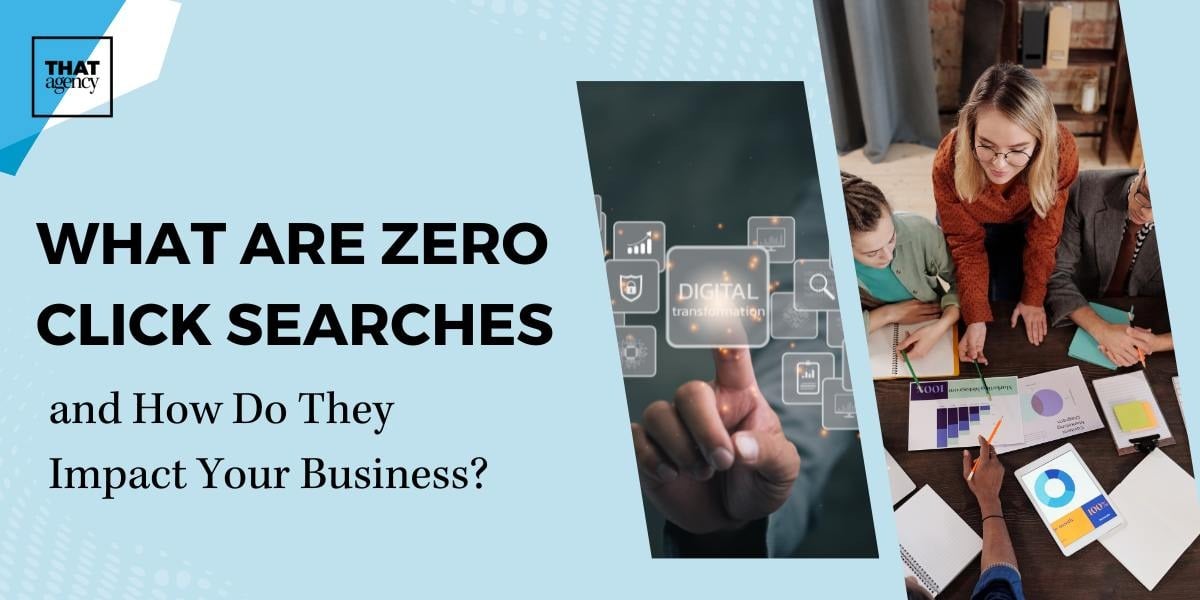
What are Zero Click Searches and How Do They Impact Your Business?
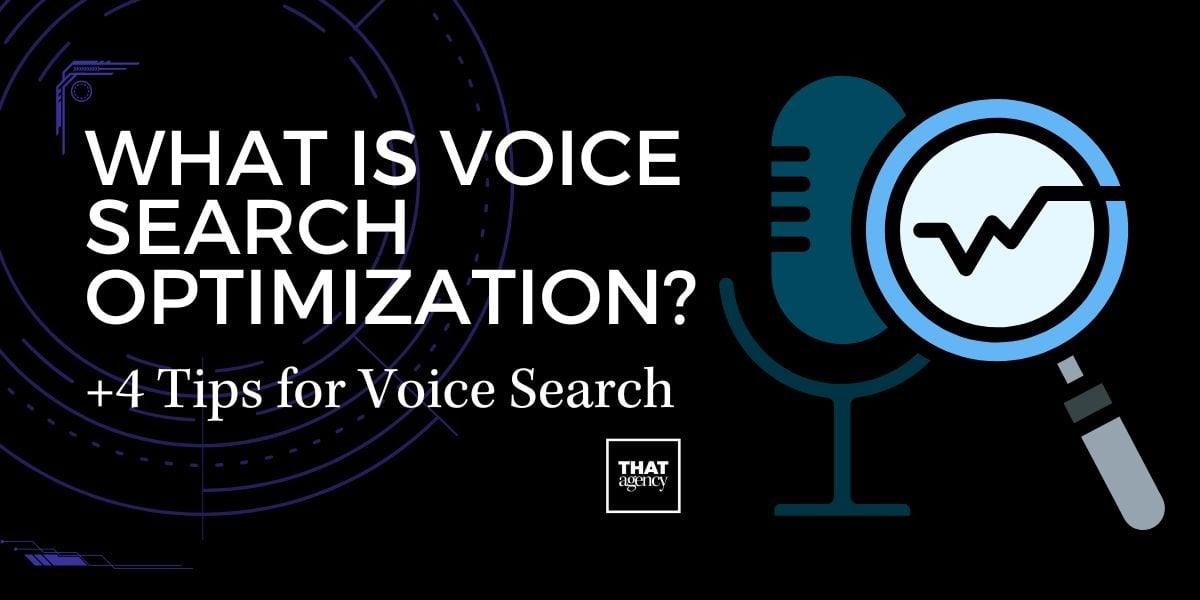
What is Voice Search Optimization? +4 Tips for Voice Search
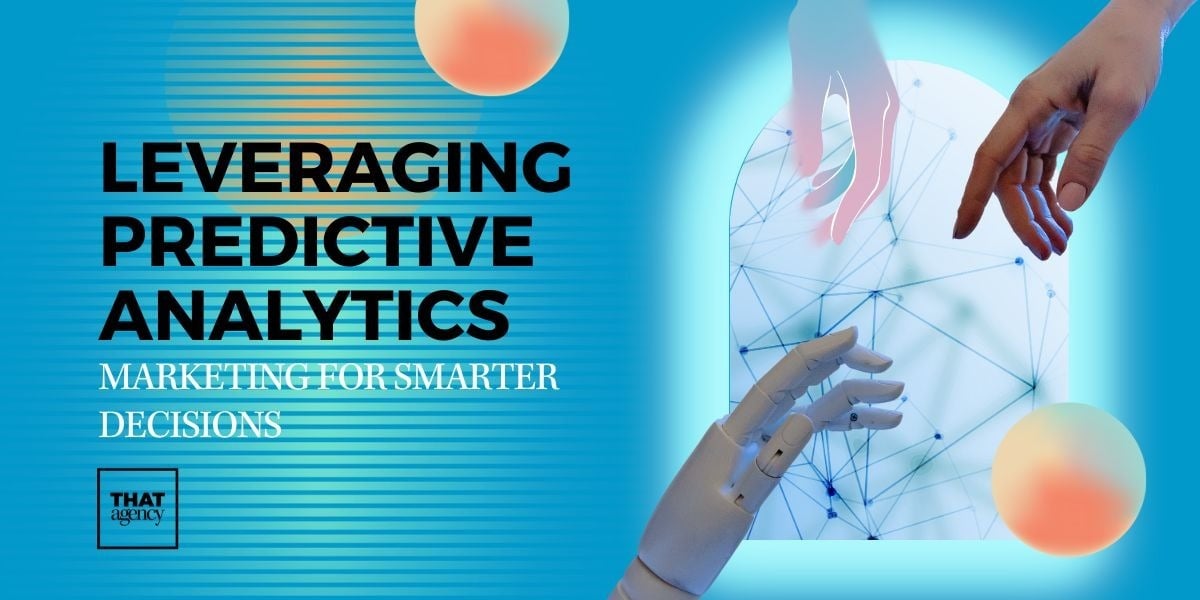
Leveraging Predictive Analytics Marketing for Smarter Decisions

Consumer Behavior Trends 2026 Every Business Must Factor Into Their Marketing Plan
.jpg)
AI Image Generation for Marketers: What’s Possible and What to Avoid
700 S. Rosemary Ave.
Suite 204-707
West Palm Beach, FL 33401
P: 561.832.6262
F: 561.832.7707

